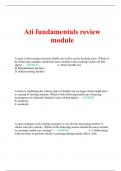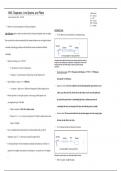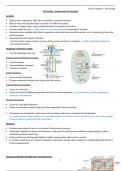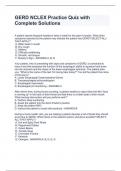CHAPTER 3: DEMAND ELASTICITIES
OVERVIEW
This chapter introduces students to the concept of elasticity of demand. A demand elasticity
measures how consumer demand responds to changes in a variable in the demand function. The
price elasticity of demand is the key elasticity measure discussed in this chapter. It measures the
sensitivity of the consumer’s behavior to changes in the price of the product by dividing the
percentage change in the quantity demanded by the percentage change in the price that induced the
change in the quantity demanded
OUTLINE OF TEXT MATERIAL
I. Introduction
A. With the exception of perfectly competitive price-taking firms, all firms with market
power face downward sloping demand curves. These firms must lower prices to sell
more units of the product.
B. For firms that have varying degrees of market power, product price is a strategic
variable that managers must understand and manipulate.
C. Demand (Price) Elasticity: Quantitative measure that shows how responsive
consumers are to changes in price.
D. The chapter also discusses the relationship between price elasticity and revenue, and
its relevance to the decisions of managers.
II. Demand Elasticity: Quantitative measurement showing the percentage change in the
quantity demanded of a particular product relative to the percentage change in any one
of the variables included in the demand function for that product.
A. Elasticity measures the responsiveness of consumers in terms of percentage changes
in both variables.
\
Copyright © 2015 Pearson Education Ltd.
, Chapter 3: Demand Elasticities 22
III. Price Elasticity of Demand (eP): Percentage change in the quantity demanded of a given
good, X, relative to a percentage change in its price, all other factors constant.
A. Equation 3.1: eP = %∆QX / %∆PX
where:
eP = price elasticity of demand
∆ = the absolute change in the variable: (Q2 – Q1) or (P2 – P1)
1. Price elasticity of demand is illustrated by the change in quantity
demanded from Q1 to Q2 as the price changes from P1 to P2.
2. This is shown as the movement along the demand curve from A to B in
Figure 3.1.
B. The price elasticity of demand affects managerial decisions on pricing strategies
through the total revenue.
1. Total Revenue: The amount of money received by a producer for the sale
of its product calculated as the price per unit times the quantity sold.
C. Price elasticities for downward sloping demand curves are negative because of the
inverse relationship between price and quantity demanded. However, to determine
the size of the price elasticity, absolute values are taken for the coefficients.
1. Unitary Elasticity: |eP| = 1, when the magnitude of the percentage change in
quantity demanded is equal to the magnitude of the percentage change in
price.
2. Elastic Demand: |eP| > 1, when the magnitude of the percentage change in
quantity demanded is greater than the magnitude of the percentage
change in price.
Copyright © 2015 Pearson Education Ltd.










